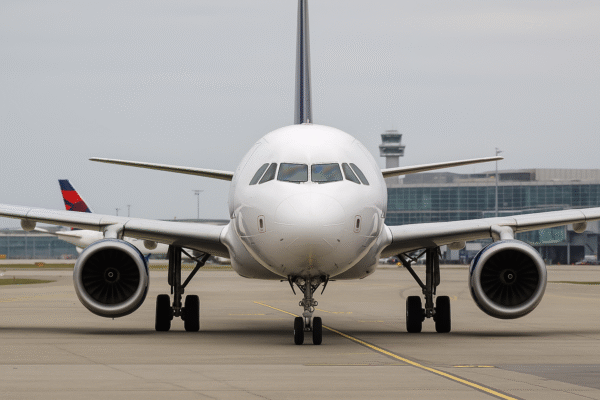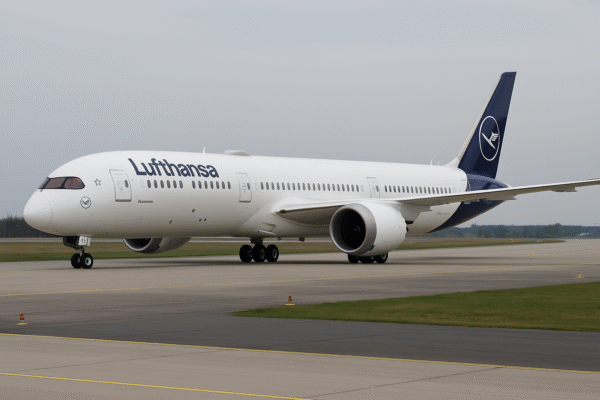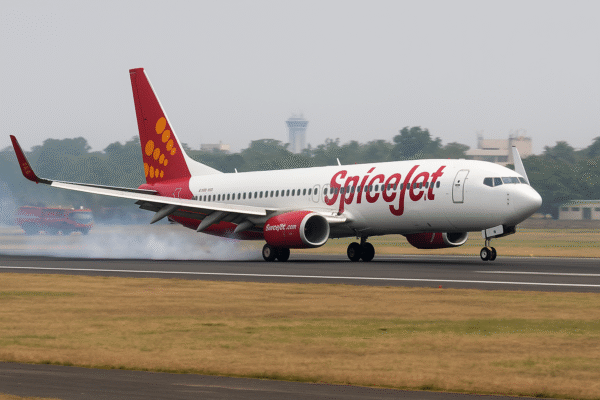A remarkable aviation incident unfolded on August 29, 2025, when SpiceJet flight SG 385, en route from Delhi to Srinagar, executed a priority emergency landing at Srinagar International Airport. The prompt and precise response by everyone involved—from the flight crew to airport personnel—underscored the fine-tuned safety mechanisms that protect travellers, even in unexpected moments.
A Mid-Air Alert That Prompted Swift Action
It’s mid-afternoon, and the aircraft is approaching Srinagar. Suddenly, an internal warning blares: the cabin altitude is rising. The cabin pressurization system, crucial for passenger well-being and aircraft integrity at altitude, sends a critical alert. Immediately, the flight crew initiates standard operating procedures, coordinating with air traffic control and declaring an emergency to prioritize the descent and landing.
Safe Touchdown, Calm Handling
At 3:27 PM, the Airbus touches down safely on Srinagar’s tarmac. Emergency teams—fully briefed and ready to assist—stand by, yet their presence remains precautionary. No passengers or crew require medical attention, a testament to the effectiveness of both the aircraft systems and the flight crew’s training. Operation at the airport continues without disruption.
Ensuring Passenger Confidence and Flight Safety
As passengers disembark, many report feelings of initial alarm, quickly eased by clear communication and calm reassurance from the captain and cabin crew. Their composed handling of the situation helped turn a potentially distressing event into a showcase of professionalism and safety.
As the aircraft remains grounded pending a thorough technical inspection, airport officials reassure travellers of ongoing service continuity. Should repairs extend, the airline stands ready to facilitate alternate travel arrangements, ensuring minimal impact on passengers’ plans.
Aviation Safety Protocols in Action
At the heart of the incident is a reliable cabin altitude warning system—an aviation safeguard designed to detect pressurization issues early. When internal pressure drops below safe levels, the system triggers procedural responses: automatic deployment of oxygen masks if necessary, checklist-driven measures by the flight crew, and coordination with ground control for immediate safe landing. In this instance, no oxygen deployment was noted, but the aircraft followed protocol faithfully.
The captain’s decision to request a priority landing reflects sound judgment—erring on the side of passenger safety as a precaution. This aligns with civil aviation best practices, where safety overrides schedule adherence.
Local and Industry Reaction
Srinagar airport authorities report that daily operations were unaffected by the emergency landing. The airport’s emergency response plans were executed seamlessly—another credit to the facility’s readiness.
Meanwhile, SpiceJet’s statement to press reaffirmed its commitment to safety-first philosophy. The airline highlighted swift action, adherence to procedures, and the absence of injuries as marks of a well-managed incident.
Travel Perspective: Why This Still Matters for Tourists
For travellers heading to the serene valleys of Kashmir, such incidents might sound alarming—but here, they are also reassuring. They demonstrate that redundant systems are in place, crew members are trained, and protocols are functional—even when unexpected issues arise.
Tourists can take heart knowing that airlines and airports in the region are prepared for rare events, ensuring passenger safety is always the top priority—without compromise.
Final Take: Safety Reigns, Tourism Stays Secure
The SpiceJet SG 385 incident may read like a minor aviation scare, but it truly showcases the robustness of modern air travel safeguards. A pressure alert triggered a rapid crew response, priority landing was executed safely, passengers remained unharmed, and tourism flows stayed uninterrupted.
For anyone planning a trip to the Mughal-era gardens of Srinagar, the adventure of Dal Lake, or the snow-dusted expanses of Gulmarg, this is good news indeed. Not only is the stunning landscape of Kashmir open for discovery, but its air approach systems and airline safety protocols function with admirable precision.
From Srinagar airport’s watchful crew to SpiceJet’s proactive response, the incident leaves one clear message: safety works in the background, often invisible, but absolutely vital—especially in places where tranquil, breathtaking tourism meets the rigors of high-altitude flying.
As SpiceJet and aviation regulators review the incident for continuous improvement, travellers can remain confident: their journeys—and stories—continue safely to unfold.
For more travel news like this, keep reading Global Travel Wire















